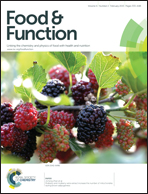Intestinal absorption of vitamin D: from the meal to the enterocyte
Abstract
Vitamin D plays key roles in bone, infectious, inflammatory and metabolic diseases. As most people get inadequate sun exposure for sufficient vitamin D status, they need adequate intake of dietary vitamin D. Many studies see optimizing vitamin D status as a public health priority. It is thus vital to gain deeper insight into vitamin D intestinal absorption. It was long assumed that vitamin D intestinal absorption is a passive process, but new data from our laboratory showed that it is actually far more complex than previously thought. This review describes the fate of vitamin D in the human upper gastrointestinal lumen during digestion and focuses on the proteins involved in the intestinal membrane and cellular transport of vitamin D across the enterocyte. Although recent data significantly improve our understanding of vitamin D intestinal absorption, further studies are still needed to increase our knowledge of the molecular mechanisms underlying this phenomenon.


 Please wait while we load your content...
Please wait while we load your content...